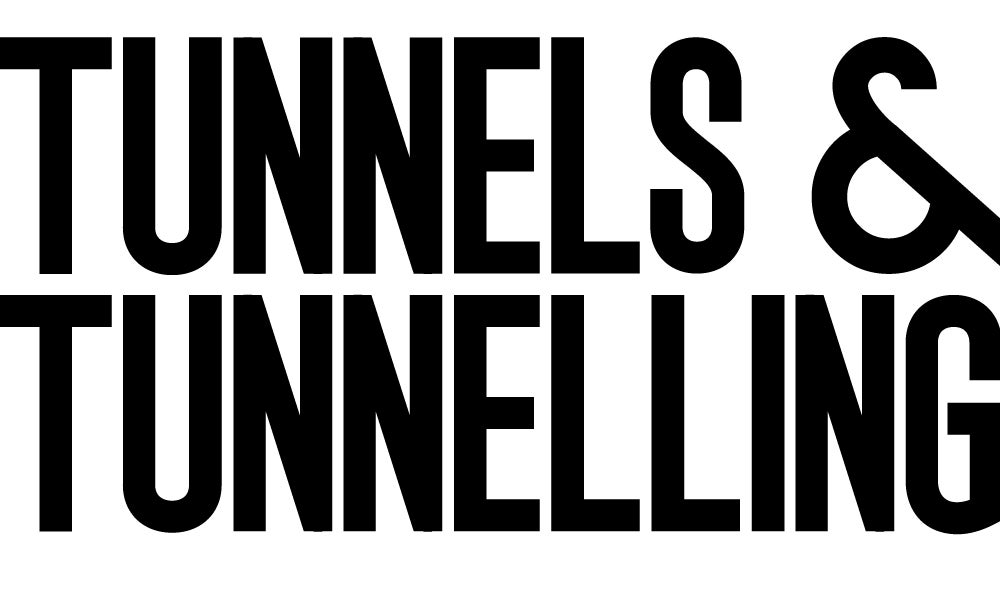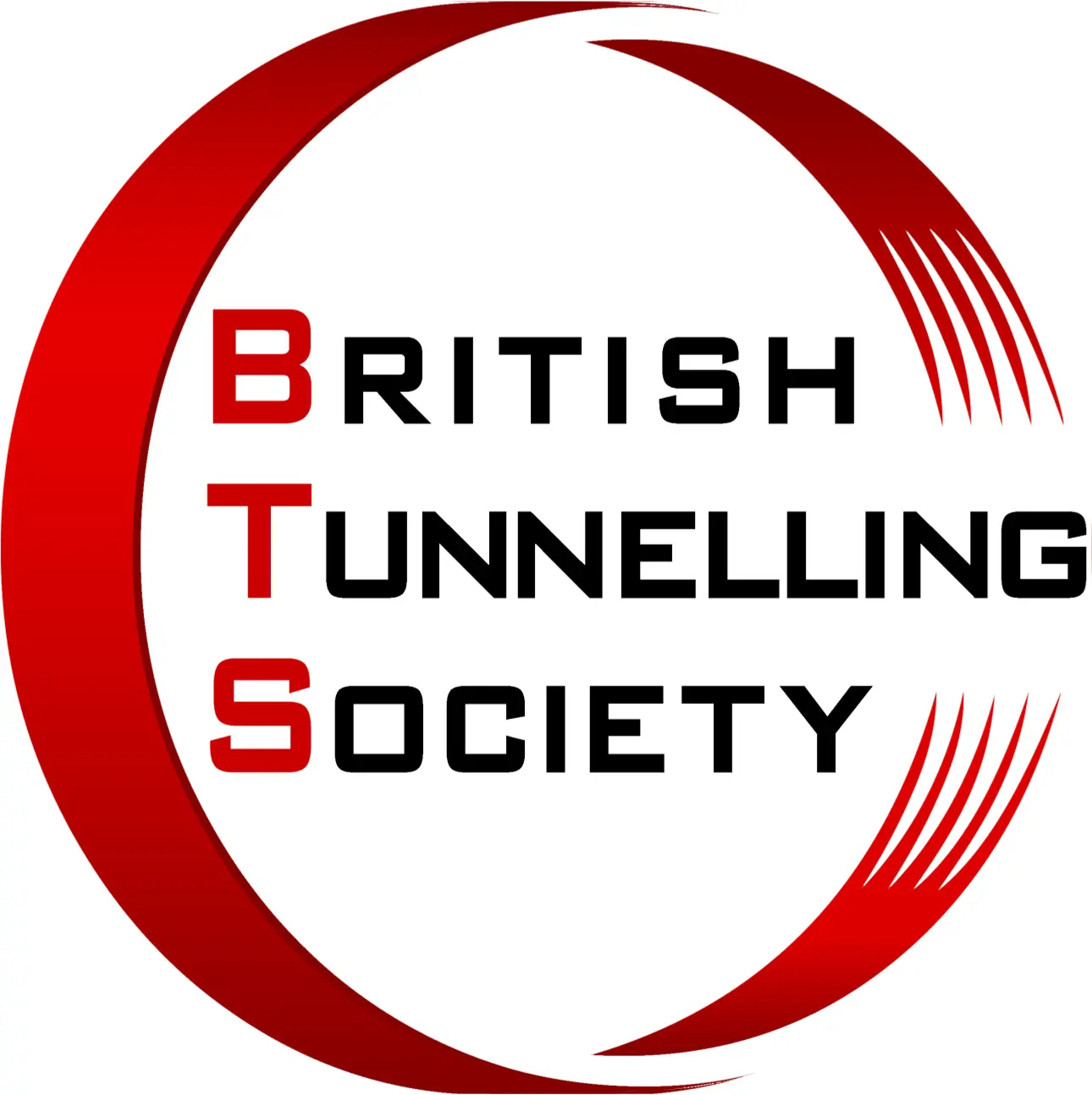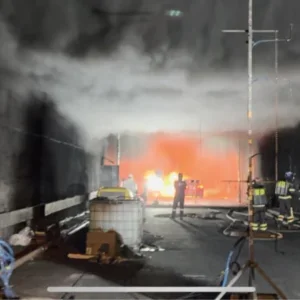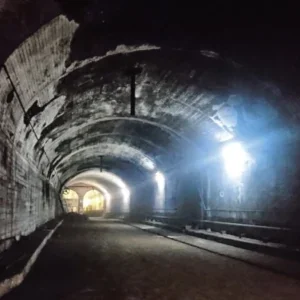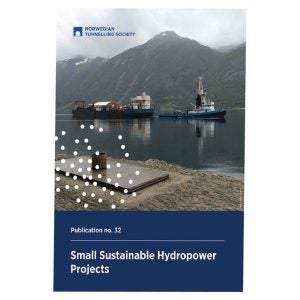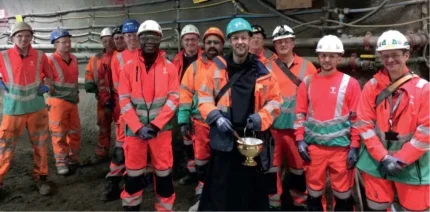
“I’ve always liked doing things, less so talking about things. As a child I loved building towers, being active, and helping my dad dig the garden. At 16, I told the career’s officer this, and he suggested I study Civil Engineering. I took a year out, spending a good deal of time building houses with my cousins in Ireland.”
John studied at Aston University over 1981-84. He says, “After a brief spell working for the supervisor in Bristol on the From Valley Relief Sewer, I joined a contractor.”
The next 12 years was spent with Balfour Beatty. “That is where I did my training under agreement and became Charted. My first introduction to tunnelling was around 1986, sinking shafts in Wiltshire. The General Foreman there made a big impression on me. It was a small job so I got to know him really well. His name was George Gladwell, but everyone called him ‘The Bomber’, I believe because during the war his father used to dig out some of the unexploded ordnance up in London. We became good friends.
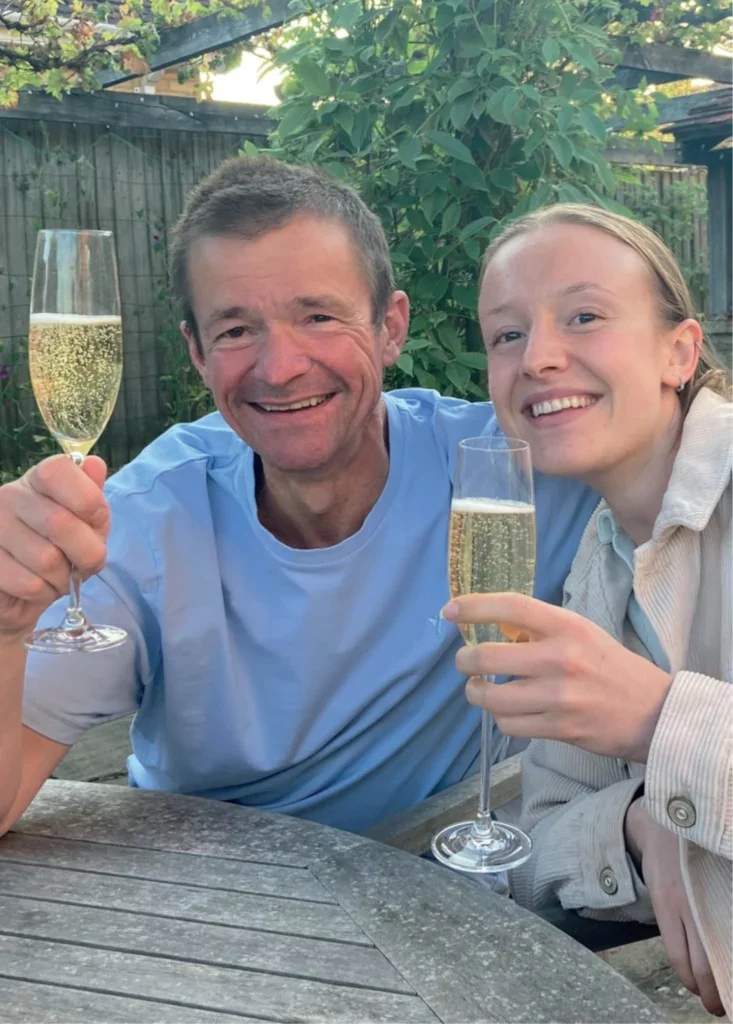
“I decided that I liked tunnelling. I liked the intensity of it, I liked the way the gang went to work, as a team; and, to be part of that, to be accepted into the gang, I think was huge. I have always enjoyed that connection with the workforce, the trust that builds up.
John was born and brought up in Newbury, in Berkshire. His father was from Ireland.
“Every summer we all used to go back and help my grandfather bring the turf back from the bog. I have always enjoyed physical work. I’m also a big fan of poetry, and there is a Seamus Heaney poem about digging that reminds me of my grandfather.
“My father told me, when I was around 16, that if I lived to a hundred no matter how hard I worked I would never work as hard as my grandfather; he was right.
“My next tunnel job was at the Angel in 1990. It was a very long escalator shaft, all dug by hand. Again The Bomber was there, and Andy Sindle, so I learned a lot there about hand work and production.
Whilst there, Andy encouraged me to submit a paper for the BTS Harding Prize Competition and I was lucky enough to be one of three selected to give a presentation. The paper was on the Angel Escalator Shaft. My mum, dad and 16-year old sister travelled up from Newbury to the ICE at Great George Street. It was the only time I can ever remember my dad visiting London. Also there was my girlfriend, and Andy Sindle, and The Bomber; what a support team! The presentation went very well. It was a fantastic evening that I still remember clearly even though it was over 30 years ago.
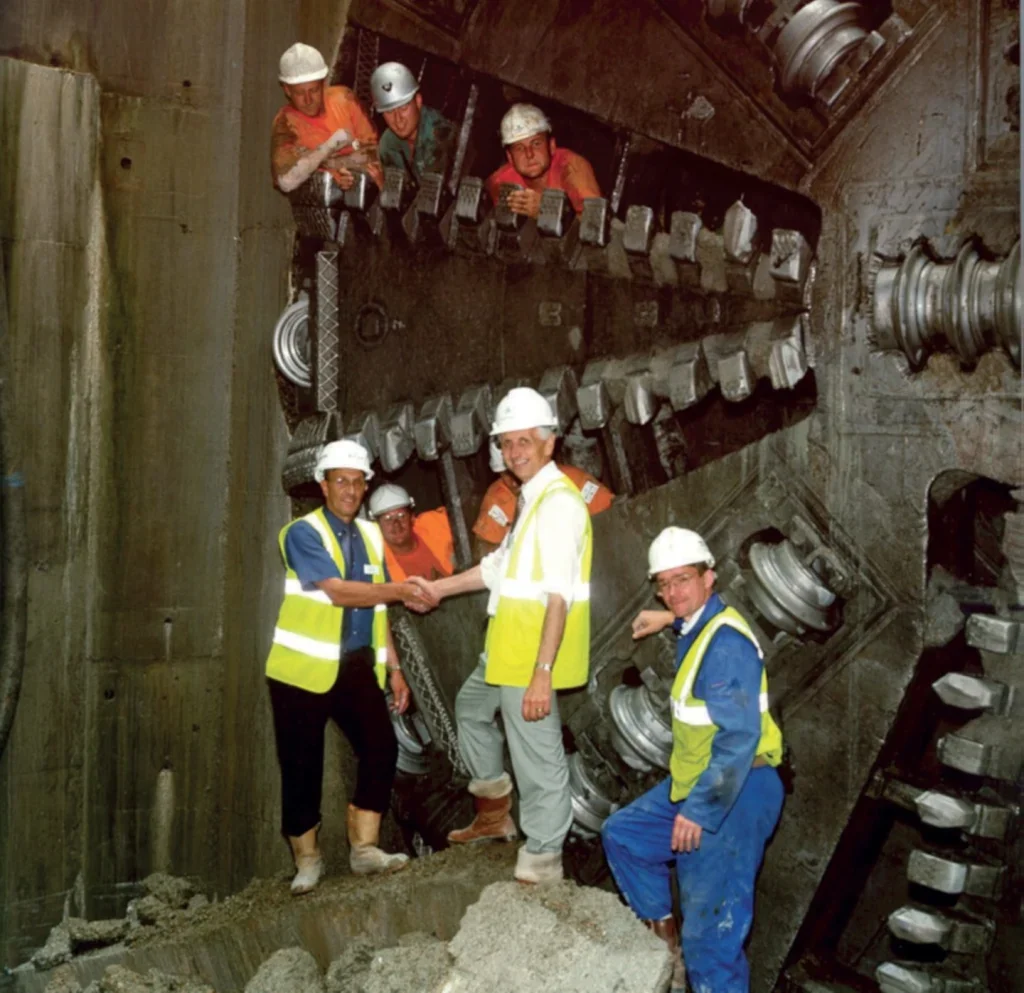
“That was when I started getting acquainted with the BTS evening presentations, which I really enjoyed. I enjoyed the social in the bar afterwards as well. I was usually the last to leave.
His next tunnelling job was in 1994, at the Heathrow Express – “my first job as site agent.” Based at Car Park 5, they used a Howden open-faced TBM to drive the running tunnels from T4 to the Central Terminal Area (CTA).
“We had a great team there. Harry Lyle was the GF who brought in his team of trusted miners from the Channel Tunnel. We worked as a team and trusted each other. I remember driving to work one morning hearing on the radio about the collapsed tunnels, and breathed a sigh of relief when I heard it was not my section. But it serves as a reminder to this day, that if you get tunnelling wrong, the consequences can be immense.”
After Heathrow, he was transferred to the Jubilee Line Extension, Contract 102.
“That was a terrific job with over 600 men, and a huge amount of work was carried out, and from my point of view it was very successful.
“I put the plan together to dismantle the old segments at the Green Park Step Plate Junction (SPJ). This enabled the new train track to be connected to the existing. Thankfully, it went well and we only needed two of the three planned weekend possessions. It was a great example of planning and engagement with the foremen and the teams doing the work. I leaned heavily on the GF, Tom Gorman, who had an amazing brain for planning work, someone who you always benefitted from after asking his advice. I still have the original method statement with Colin MacKenzie’s hand-written comments on it.”
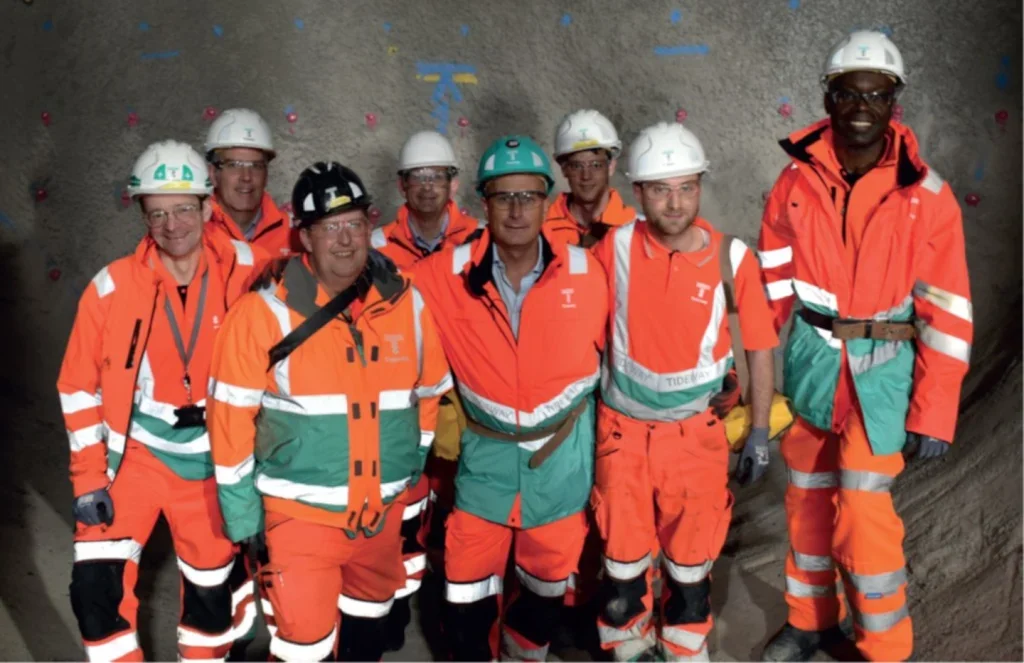
In 1997, he left Balfour Beatty and joined Miller Civil Engineering (now Morgan Sindall) for the Hastings Stormwater project – “and I have remained with them ever since.”
The Hastings job was his first slurry TBM drive. “Getting the Herrenknecht TBM down to Hastings was a story in itself,” he says.
“We had planned to take it by road, from London Docks down the A21; but the TBM was 6.5 metres in diameter and the single carriageway road was just too narrow. Hastings doesn’t really have a harbour, but it has a fishing fleet, of quite big boats, that they pull up on winches across the shingle beach every time they land; and we took the TBM in the same way. We had to negotiate financially with the fishermen.
“It was quite spectacular. Big crowds came out to watch.” He adds that “it went so well that after completing the drive we returned the TBM to Herrenknecht the same way.”
In 1999, he went back to Heathrow. He worked on the six tunnels required to form the transport links to Terminal 5, together with the Storm Water Outfall Tunnel.
“T5 was a hugely successful construction project, that almost everyone I speak to about thoroughly enjoyed. It was constructed on time, and close to the original budget. It demonstrated what we can achieve in this country, when client, contractor and designer are fully aligned and focus their energies on the end goal. It’s no coincidence that those jobs people enjoy working on are the most successful.”
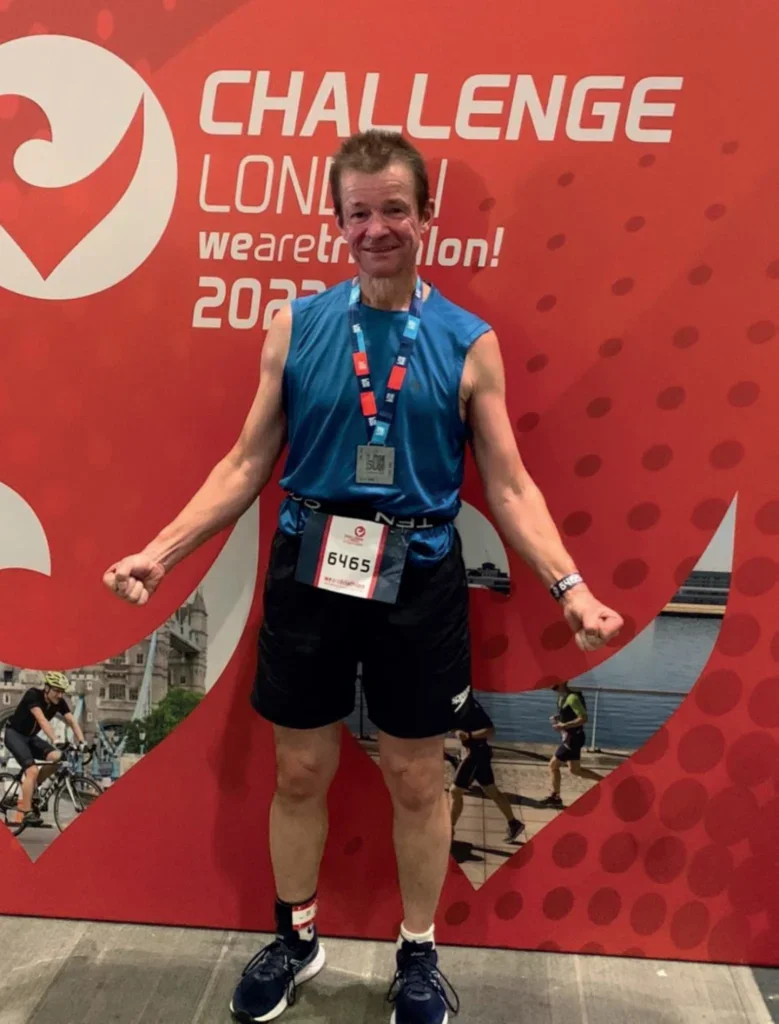
Next, he was off to Belfast.
“After T5, I spent a very enjoyable 18 months in Belfast, where the ground was highly variable, and certainly nothing like the stability of London Clay that I had been used to. It demonstrated to me just how aggressive the ground can be, and how important it is, to ‘not let the ground know you are there.’”
He adds – “20 metres of highly fluid ground has a way of finding its way to the atmospheric pressure within a tunnel, at a remarkably quick rate.”
What of how tunnelling is perceived?
“I think the perception of tunnelling could be better, both by the decision makers in Parliament, and the public. We need to promote those projects that go well. Tideway, for example, has been a fantastic project and a great example of efficient construction, which is probably not widely known to the public. It is now partly operational and it’s going to make a huge difference to London and to the whole country. A 25-year vision realised.”
He spent almost 12 years working on London’s ‘Super Sewer’ – six years on London Tideway West and six years on the Lee Tunnel. That works out at 32km of largediameter tunnel, at mostly 7.2m in finished diameter.
“Lee Tunnel was particularly challenging. That was one of the deepest tunnels constructed in the UK, certainly in the London area; we had a few surprises along the way,” he says.
“It was about 75 metres down at the deepest point, excavated using an 8.8m OD Herrenknecht slurry TBM. We were operating at up to six bar working pressure. The Site Information indicated a full face of Chalk with over 50 metres of competent ground above to the River Thames. Then, early one morning River Terrace deposits were seen by the operators of the Slurry Treatment Plant. We had encountered a Drift Filled Hollow – a relatively narrow funnel of hydrostatically-charged loose granular material.
“These Drift Filled Hollows are dotted all over London and are a huge risk to tunnelling, and obviously the deeper you are the more pressure you’re going to get from them. Thankfully, we handled it well. We were at the right operating pressures, we made the right decision to keep going and get out of the bad ground and back into competent chalk. It reinforced my belief that, in tunnelling, you ignore the fundamental operating rules at your peril.
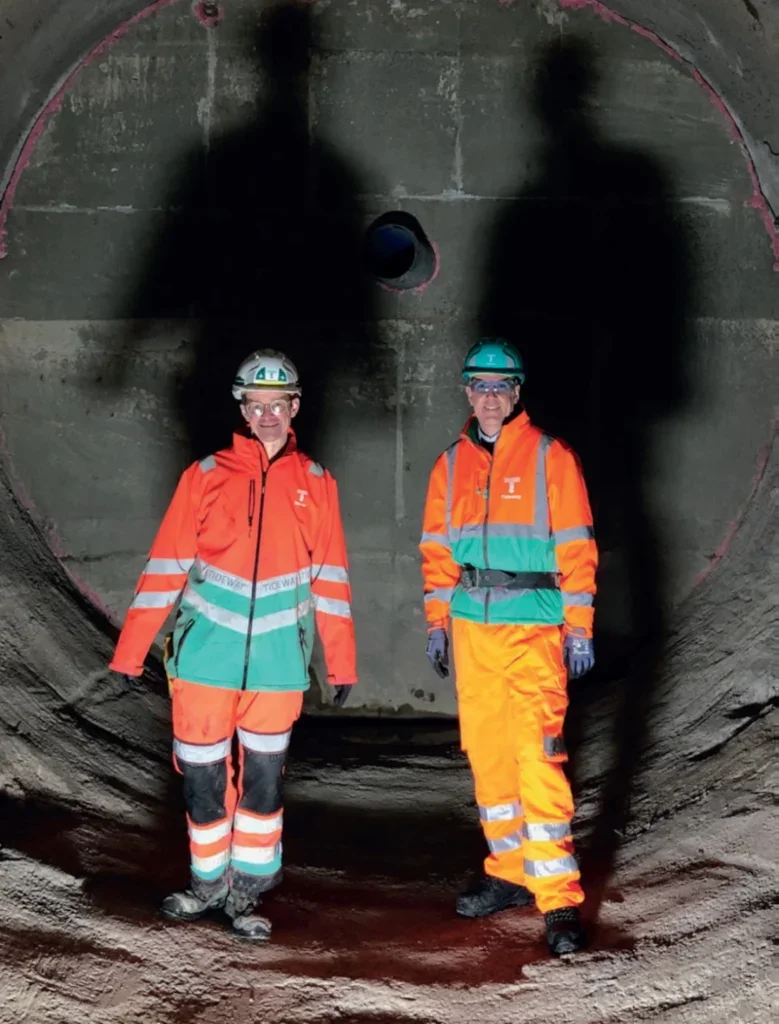
“Whilst working at Lee Tunnel I decided to put my name forward to join the BTS Committee. I felt that tunnelling had been good to me, and I wanted to put something back. I was fortunate enough to be selected.
“I remember at my first Committee meeting. I was surrounded by all these people I had heard about and admired. I remember I was asked one simple question by the Chair, Bob Ibell, and I went bright red.
“But, as I gradually became more familiar with it, I really enjoyed the opportunity to get to know a lot of people, from different areas of the industry. I ended up organising the evening meetings, which I selected. I found that the best presentations were a combination of design and a description of the construction works. The evening lectures are a great way to share learning to the wider industry.”
As an example, Charles Allen spoke at the 2024 BTS Harding Lecture about one section of the secondary lining carried out on Tideway tunnel – “that I had worked on (thanks for the reminder Charles!).
“We cast the secondary lining directly up to the primary shotcrete lining and it caused cracking in the tunnel crown. During questions, Dave Hindle said the exact the same thing had happened to him many years previously. So we need a mechanism where we can continue to learn from each other.”
A few years later, Ivor Thomas was about to become Chair and, John says, “he encouraged me (as only Ivor can) to rejoin the Committee; but it was never in my head to become Chair.
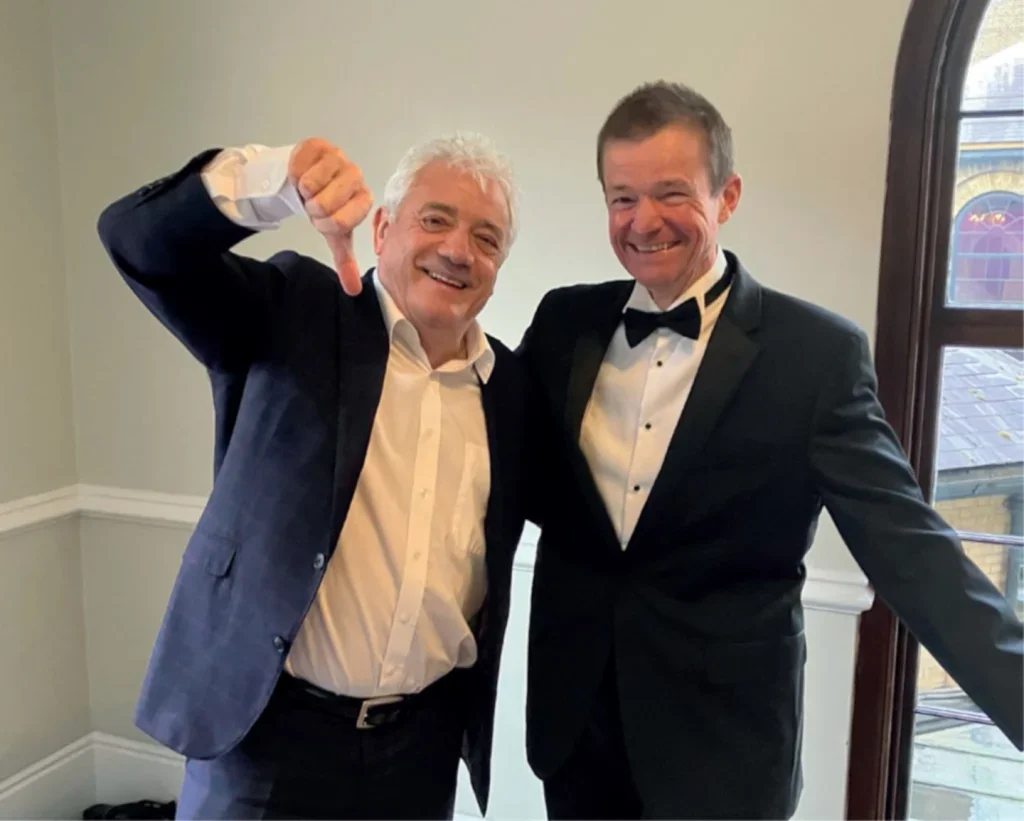
“I then became heavily involved in the ‘BTS at 50’ book; I did a lot of the research and interviewing. One particularly memorable one involved a visit to the brother of Harry Lyle, to interview two old miners, Jock Lyle and John Sheridan, talking about their careers in tunnelling. Please read the book (page 100) if you want to know more.
“I think Ken Spiby has done an amazing job keeping that all together. The book is now out, and we are receiving wonderful feedback on the quality and content. If anyone has not yet purchased a copy, it is still available (go onto the BTS website to order), but get in quick, as only a fixed number were printed.
“I am helping John Scholey with organising the BTS Annual Dinner, which again I really enjoy, particularly the food and wine sampling session The Brewery runs, to enable the menu to be selected. I can assure our members that I personally work extremely hard at that session, insisting for example on sampling every one of the wines on offer. I think, overall, the British Tunnelling Society is a fantastic organisation. It is not too bureaucratic, and it does a lot of good.
“I am keen to get feedback about what our members want from the Committee, and how can we best support them? I know quite a lot of people in the tunnelling industry, and it is good that I can draw upon them if I need any help or they can help to promote BTS events and training courses.
“And, I’d like to encourage as many people as possible to put themselves forward to join the Committee.”
A call for nominations goes out March/ April each year.

“The Committee should truly represent the range of tasks that we do in the tunnelling industry, to reflect the diversity of skills required to construct tunnels. I’m not sure that the workforce themselves get represented very well. If there is anyone out there that would like to put themselves forward, I’d be really keen on that.”
Early in 2024, the Committee held a workshop to develop a five-year mission strategy.
“After many hours of debate, we homed in on several key areas to focus on. One of the main ones was to be able to influence the decision-makers in construction of infrastructure, to be able to give them the right message about how we do what we do. We do have links into government, but it is about trying to get the best out of those links to promote our industry and give decision-makers confidence to construct new tunnels.
“Getting consent to start big projects is very difficult. It can be very expensive as well. We are not so good in this country at just getting on with things. We have a lot of hoops to jump through, so you could be on a huge spend before you’ve even put a spade in the ground.
“Wherever possible we should try to integrate tunnel construction with the follow-on trades, such as casting of tunnel inverts and installation of mechanical and electrical equipment. This requires a lot of planning and collaboration with follow-on trades, but tunnellers, by their very nature, are good at long-term planning.
“Another thing that I am very keen on is integrating the BTS Young Members into the main membership and onto the main Committee. At November’s Committee meeting, Arabel Vilas Serin, the Chair of the Young Members’ Committee, gave a terrific presentation on what they hope to achieve and what their goals are. It’s like a football team, you need that blend of youth and experience.”
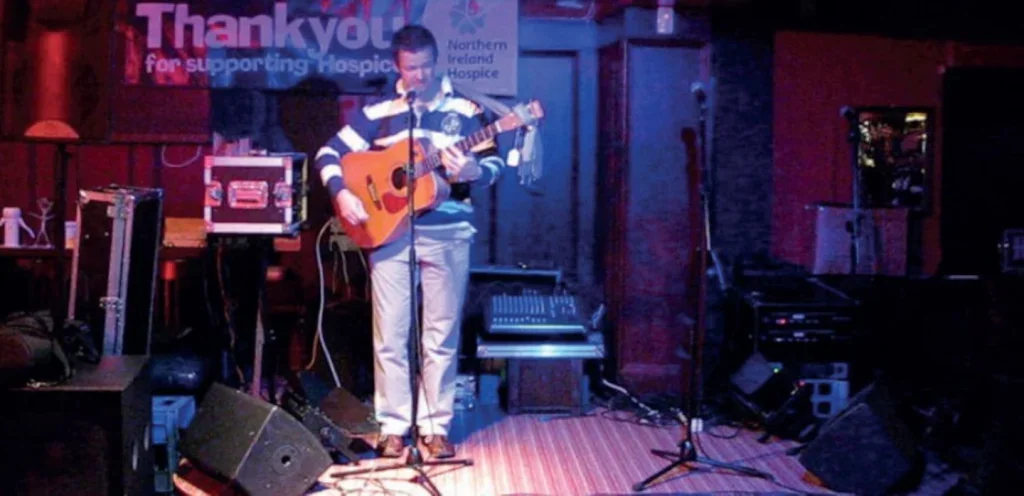
A feedback comment from the BTS Health & Safety Course last year considered a blend of experience and young presenters to work very well – “this was the talk on compressed air working.”
He adds: “Young people look at things differently, and often ask, ‘Why has it always been done that way?’ That, coupled with energy and open minds is a great way to innovate and improve our industry.”
Another big theme from the five-year strategy workshop was Net Zero.
“Richard Sutherland is heading up a working group, getting people from throughout the industry so that the BTS can act as a focal point. It is starting to take shape. The idea is that the BTS can give guidance and act as a conduit, getting feedback from clients, contractors, designers, and other industries to formulate a vision and promote best practice. What a wonderful target that is, for both the Society, the industry, and our planet.
“Another thing that’s we’re looking at is the BTS Constitution, including how we can integrate the young members into the main Committee. The intent is to try and make us as efficient as possible, so we don’t get bogged down in too much bureaucracy; but having said that, for the last fifty years I think that the BTS has worked pretty well. I think the membership fee is remarkably good value.
“We run the Health & Safety Course and also the Design and Construction course, and both are fantastic.” He adds, “We are trying to tap into the industry on that as much as possible, and to get more and more people involved, young and old. We are trying to continually improve and to bring in fresh ideas.
“For example, we conducted industry review of what they required from the annual Health & Safety Course. We subsequently introduced new topics and new speakers… bringing in fresh ideas and spreading the word about how good the BTS training courses are. And, it is great experience for the new presenters as well. Win-win, I think they call it.
“Another good initiative has been instigated by Nick Lock, who joined the Committee in 2024. He is setting up a group to look at fire safety and tunnels. There have been a couple of cases of electric vehicles combusting, so there definitely needs to be some guidance and some joined-up thinking on that. It is great to see new members like that on the Committee with initiative, energy, and ideas.”
He likes being busy – “at work and also in my spare time.”
John adds, “I like nothing more than being out in the garden and get great pleasure out of simple things, such as the rose cuttings I took from my daughter’s garden. These are now starting to sprout leaves. I don’t quite talk to these cuttings, but they are in my thoughts, and I look at them several times a day.
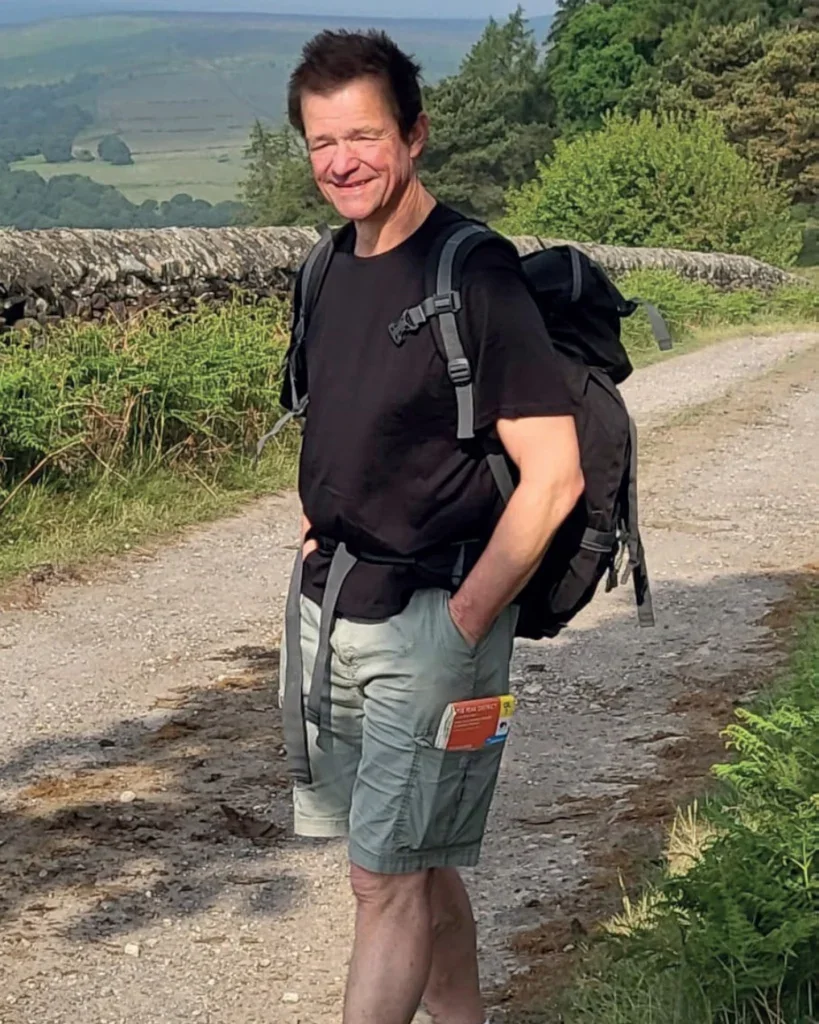
“I’ve always like keeping fit. I’ve run around 16 marathons but that is curtailed due to a hip replacement. This has not, however, stopped me from taking part in triathlons. I’ve done the London Triathlon Olympic distance for the past 20 years and will compete again this year. It’s a great event and I really enjoy cycling down the A13 into London, with no cars on the roads. Sadly, my days of achieving personal bests are behind me.
“I also like playing guitar and have been known in the past to sign the odd song. Nowadays all the planets need lining up before I sing – my voice is not great, but I make up for it with enthusiasm.
“Another great passion for me is walking. Every year I plan a route with a few of my mates, where we spend several days walking through country, staying at different places each night. There’s nothing better than arriving in a new town, tired from all day walking in the hills. Find a nice pub with accommodation, get a wash and change, then down for a few beers. This year we are going to Northumberland and will spend a night on Holy Island.
“I’m extremely proud to be Chair of the BTS. It has taken me quite some time to actually believe I now hold that position. For many years I looked up to previous Chairs with huge admiration. I’ve received great support from all Committee members and also many of my colleagues in the tunnelling industry. I am also extremely grateful to be able to draw upon the experience of many of the past BTS Chairs.
“So now I’m here, I hope to encourage feedback from our members, to continually review and improve what we do, encourage and support that blend of youth and experience, encourage a greater range of people to apply for and join the Committee, and finally, to have some fun doing it.”
